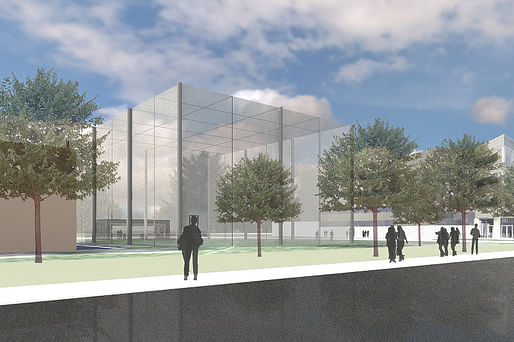

Autonomous aerial vehicles have a host of applications, researchers say. Large ones can be used for commercial transport and national security. Small drones could survey disaster sites, inspect infrastructures like bridges and wind turbines, gather environmental and atmospheric data, and deliver packages, for example. Package delivery goes beyond Amazon orders. — The Michigan Engineer News Center
University of Michigan’s College of Engineering is adding an outdoor fly lab for testing autonomous aerial vehicles to the university’s spate of advanced robotics facilities. Designed by Harley Ellis Deveraux, M-Air will be a netted, four-story complex situated next to the site where the Ford Motor Company Robotics Building will open in late 2019. Construction of the $800,000 M-Air is expected to begin in August and be complete by the end of the year.
“M-Air will allow us to push the edge of our algorithms and equipment in a safe way, where the worst that can happen is it falls from the sky,” said Ella Atkins, professor of aerospace engineering. “With this facility, we can pursue aggressive educational and research flight projects that involve high risk of fly-away or loss-of-control—and in realistic wind, lighting and sensor conditions.”
No Comments
Block this user
Are you sure you want to block this user and hide all related comments throughout the site?
Archinect
This is your first comment on Archinect. Your comment will be visible once approved.